Root structure and modification, elective biology note for SHS.

Root structure and modification
ROOT SYSTEM:
- The root system anchors the plant in the soil.
- It absorbs water and ions from the soil.
- Also, conducts water and selected ions to the shoot.
- And obtains energy in the form of sugar from the shoot.
- Stores material produced in the shoot for later use.
Most plants have a tap root system with numerous lateral roots while some also have a fibrous root system.
Dicots have a tap root system, while monocots have a fibrous root system.
A tap root system is a root system with a main root that grows down vertically, and from which many smaller lateral roots arise.
Tap root system penetrates deep into the soil.
A fibrous root system is located closer to the soil surface and forms a dense network of roots that also helps prevent soil erosion.
Moreover, some plants have a combination of tap roots and fibrous roots.
Plants produce several other types of roots that provide adaptive advantages in response to different habitats.
Four regions are commonly recognized in developing roots:
- Root cap
- Zone of cell division
- The zone of elongation
- The zone of maturation

In the last three zones, the boundaries are not clearly defined.
When apical meristem initially divides, daughter cells that end up on the tip end of the root become root cap cells.
Cells that divide in the opposite direction pass through the three other zones before they finish differentiating into specific cells and tissues.
The root cap:
The root cap is composed of two types of cells:
- the inner columella cells (they look like columns),
- and the outer, lateral root cap cells,
These cells are continuously replenished by the root apical meristem.
The root cap cells, which have an average life of less than a week, are constantly being replaced from the inside, forming a mucilaginous lubricant that eases the root through the soil.
A new root cap is produced when an existing one is artificially or accidentally removed from a root.
The zone of cell division:
- The apical meristem is located in the centre of the root tip in the area protected by the root cap.
- Most of the activity in this zone of cell division takes place toward the edges of the meristem, where the cells divide every 12 to 36 hours, often coordinately, reaching a peak of division once or twice a day.
- A group of cells in the centre of the root apical meristem, termed the quiescent centre, divide only very infrequently.
Cells of the root apical meristem segregate into three primary meristems.
- Cells in the centre of the root tip become the procambium;
- those just outside the procambium become ground meristem;
- and those on the periphery of the apical meristem become protoderm.
The zone of elongation:
- Most of the increase in a root’s length comes from here as cells increase in length rather than in width as their vacuoles fill with water.
- This pushes the root cap and apical meristem through the soil as much as several centimetres a day.
- No further increase in cell size occurs above the zone of elongation.
- The mature parts of the root, except for increasing in girth, remain stationary for the life of the plant.
- The root elongation zone illustrates the general principle that cell expansion in plants is not necessarily linked directly to cell division.
The zone of maturation/differentiation:
- The zone of maturation can be identified by the presence of numerous microscopic hairs that emerge from the root epidermis.
- Cells do not increase in length but they may differentiate further and take on specialized roles in the zone of maturation.
General description of a mature root internal structure:
- The root has an outer layer of cells called the epidermis, which surrounds areas of ground tissue and vascular tissue.
- The epidermis provides protection and helps in absorption.
- Root hairs, which are extensions of root epidermal cells, increase the surface area of the root, greatly contributing to the absorption of water and minerals.
- The ground tissue forms two regions: the cortex and the pith.
- The cortex is between the epidermis and the vascular tissue.
- The pith lies between the vascular tissue and the centre of the root.
- The vascular tissue in the root is arranged in the inner portion of the root, which is called the stele.
- A layer of cells known as the endodermis separates the stele from the ground tissue in the outer portion of the root.
- The endodermis is exclusive to roots and serves as a checkpoint for materials entering the root’s vascular system.
- A waxy substance called suberin is present on the walls of the endodermal cells.
- This waxy region, known as the Casparian strip, forces water and solutes to cross the plasma membranes of endodermal cells instead of slipping between the cells.
- This ensures that only materials required by the root pass through the endodermis, while toxic substances and pathogens are generally excluded.
- The outermost cell layer of the root’s vascular tissue is the pericycle, an area that can give rise to lateral roots.
- In dicot roots, the xylem and phloem of the stele are arranged alternately in an X shape
- In monocot roots, the vascular tissue is arranged in a ring around the pith.

Root modifications:
When roots develop from organs of the shoot system instead of the root system, they are known as adventitious roots.
Root structures may be modified for specific purposes and functions. Example are;
Prop roots
- Prop roots are thick adventitious roots from the lower parts of the stem that grow down to the ground.
- They brace the plants against wind and provide extra support to the plant.
- It is found in maize plants and other monocots.
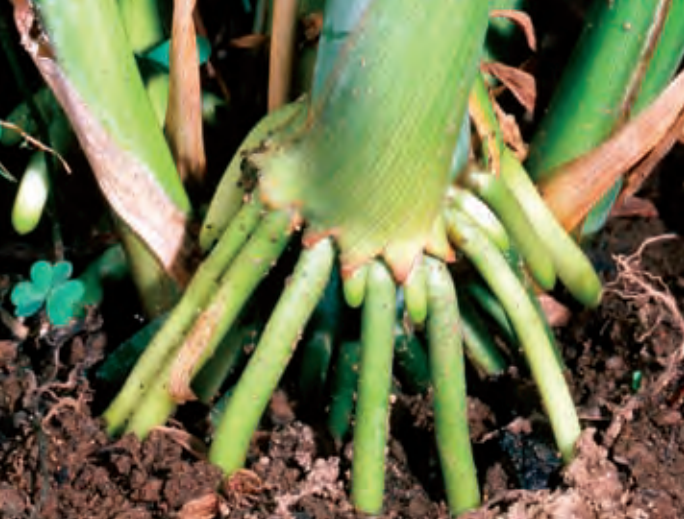
Food storage roots:
- The thick taproot of some biennial plants, such as carrots and beets, stores carbohydrates during the first of the plants’ two growing seasons.
- These plants produce at intervals, many extra parenchyma cells that store large quantities of carbohydrates.
- Cross sections of these roots reveal multiple rings of secondary growth.
- Examples include carrots, beets, parsnips, radishes, and turnips.
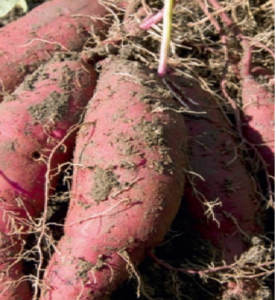
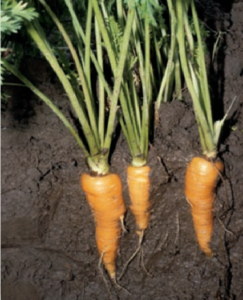
Buttress roots:
- Buttress roots are additional roots found in plants with shallow taproots.
- They grow horizontally on the surface of the soil before entering the soil.
- They provide extra support to the plant since their taproot does not grow deep into the soil.
- It is found in flamboyant plants and silk cotton tree
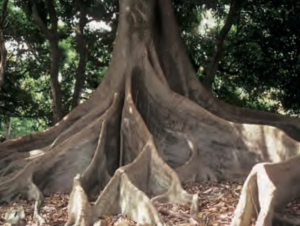

Pneumatophores (breathing roots):
- Pneumatophores are roots that grow upward from the main root in swamps or waterlogged soil into the atmosphere (surface of the water).
- They are spongy with numerous airspaces.
- Due to their spongy nature, they undergo gaseous exchange by absorption of atmospheric oxygen for respiration.
- These roots grow upward not downward in response to gravity.
- They can be found in white mangroves (Avicennia)
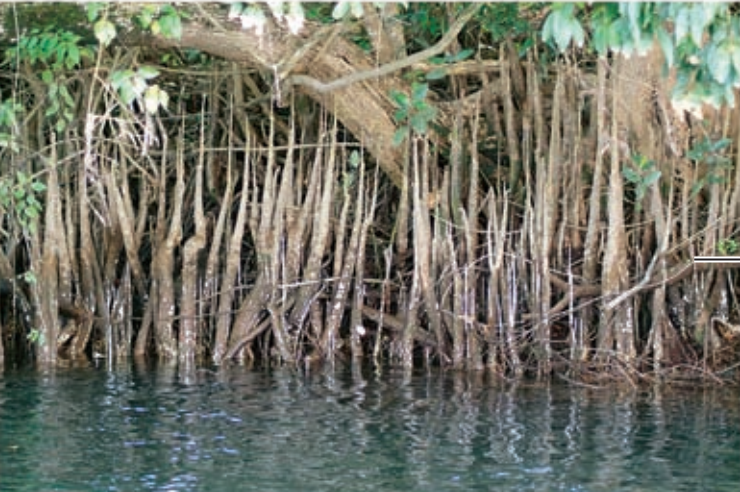
Parasitic roots:
- The stems of certain plants that lack chlorophyll, such as dodder (Cuscuta spp.) produce peg-like roots called haustoria that penetrate the host plants around which they are twined.
- The haustoria establish contact with the conducting tissues of the host and effectively parasitize their host.
- Dodder not only weakens plants but can also spread disease when it grows and attaches to several plants.
Other modified roots include;
- Stilt roots.
- Aerial roots
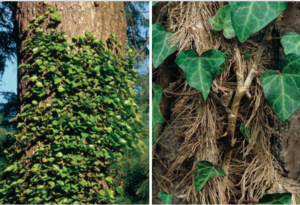
- Contractile roots
NOTE:
Roots occur in multiple forms that reflect adaptation to environmental conditions.
Examples of aboveground roots include prop roots, buttress roots, and pneumatophores.
The internal organization of roots is comparatively uniform, and three major zones can be recognized with the use of a microscope: the root apical meristem and root cap, a zone of cell and root elongation, and a zone of tissue maturation.
Features of the mature root include;
- Epidermal root hairs that aid nutrient uptake, a food-storing cortex,
- An endodermis that functions in the mineral selection,
- A pericycle that produces lateral (branch) roots (and vascular cambium in the case of woody roots).
- And an inner core of vascular tissue
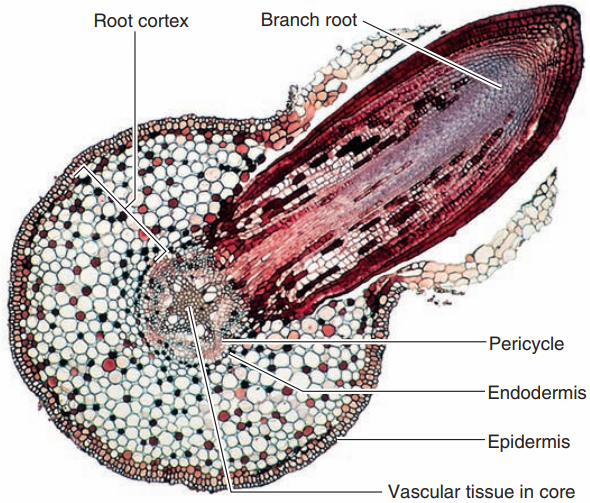


Join Enlighten Knowledge WhatsApp Channel.
Join Enlighten Knowledge Telegram platform.





